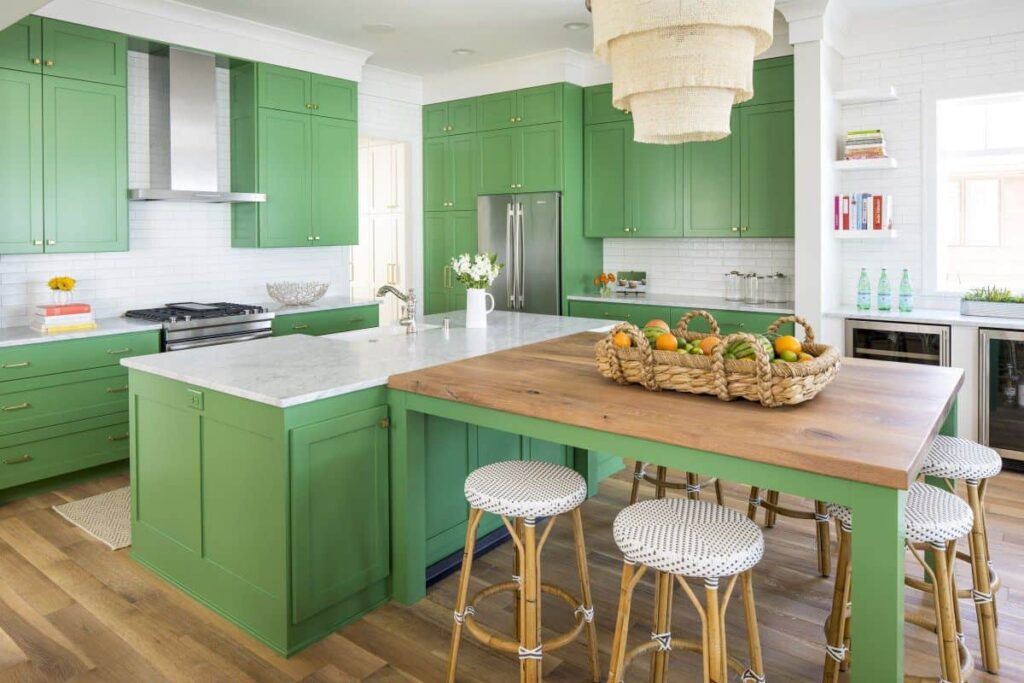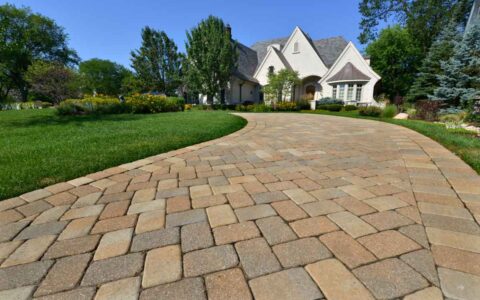When redesigning a kitchen, many homeowners now prioritise sustainability alongside style. With increasing awareness about environmental impact, green kitchen design has evolved from being a niche concept to a mainstream choice. Today’s green kitchens aren’t just about choosing eco-friendly materials but also about creating a harmonious, functional, and aesthetically pleasing space that reflects an earth-conscious lifestyle. In this blog, we’ll explore innovative green kitchen design ideas to help you craft a stylish, sustainable cooking area that’s beautiful and kind to the planet.
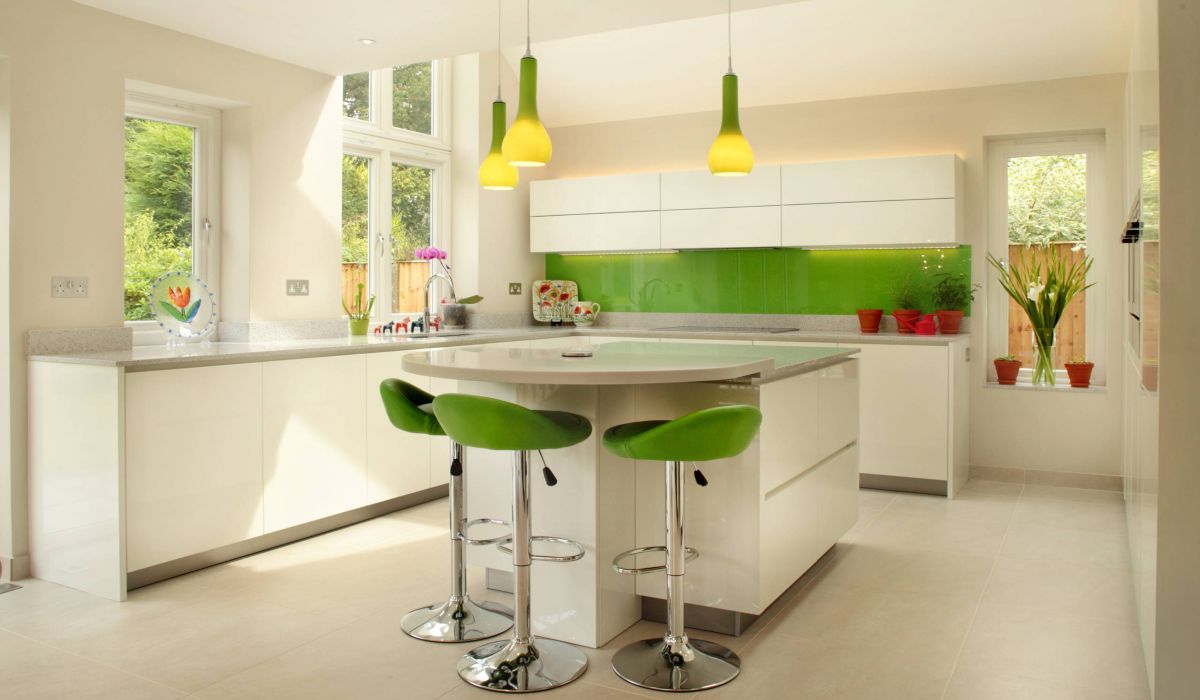
Choose Eco-Friendly Materials
Choosing sustainable, eco-friendly materials is one of the most crucial aspects of a green kitchen design. Eco-friendly materials minimise environmental impact, are often renewable, and are free of harmful chemicals.
- Bamboo and Reclaimed Wood: Bamboo is a rapidly renewable resource, making it a fantastic option for countertops, cabinetry, and flooring. Reclaimed wood from old buildings and structures adds character and charm while reducing demand for new timber.
- Recycled Glass Countertops: These are made from crushed, recycled glass bound together with eco-friendly resins. Available in various colours and patterns, recycled glass countertops add a unique touch to your kitchen while helping to reduce landfill waste.
- Sustainable Flooring Options: Cork and linoleum are great choices for eco-conscious flooring. Cork is renewable and naturally resistant to mould, mildew, and pests. Linoleum, made from linseed oil, wood flour, and cork dust, is biodegradable and durable, perfect for high-traffic kitchen areas.
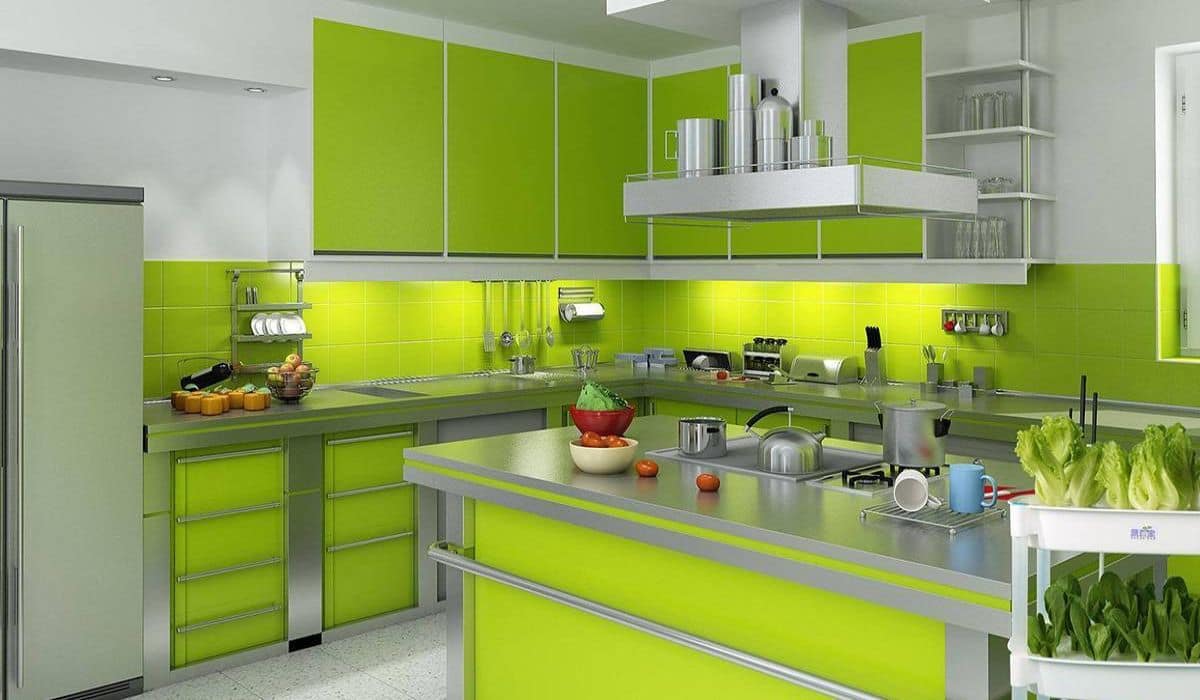
Incorporate Energy-Efficient Appliances
Incorporating energy-efficient appliances is a game-changer for creating a green kitchen. Modern appliances are designed to perform optimally while consuming less energy, which reduces greenhouse gas emissions and can significantly lower electricity bills.
- Opt for Energy Star-Certified Appliances: Look for the Energy Star certification when shopping for refrigerators, dishwashers, and ovens. These appliances meet strict government energy efficiency guidelines, ensuring reduced energy consumption.
- Induction Cooktops Over Gas Stoves: Induction cooktops use electromagnetic energy to heat the cookware directly, making them much more efficient than gas stoves. They also don’t emit harmful gases into your kitchen, improving indoor air quality.
- Consider Low-Flow Faucets and Water-Saving Dishwashers: Water efficiency is as important as energy efficiency. Installing a low-flow kitchen faucet and a water-saving dishwasher can significantly reduce water usage without compromising performance.
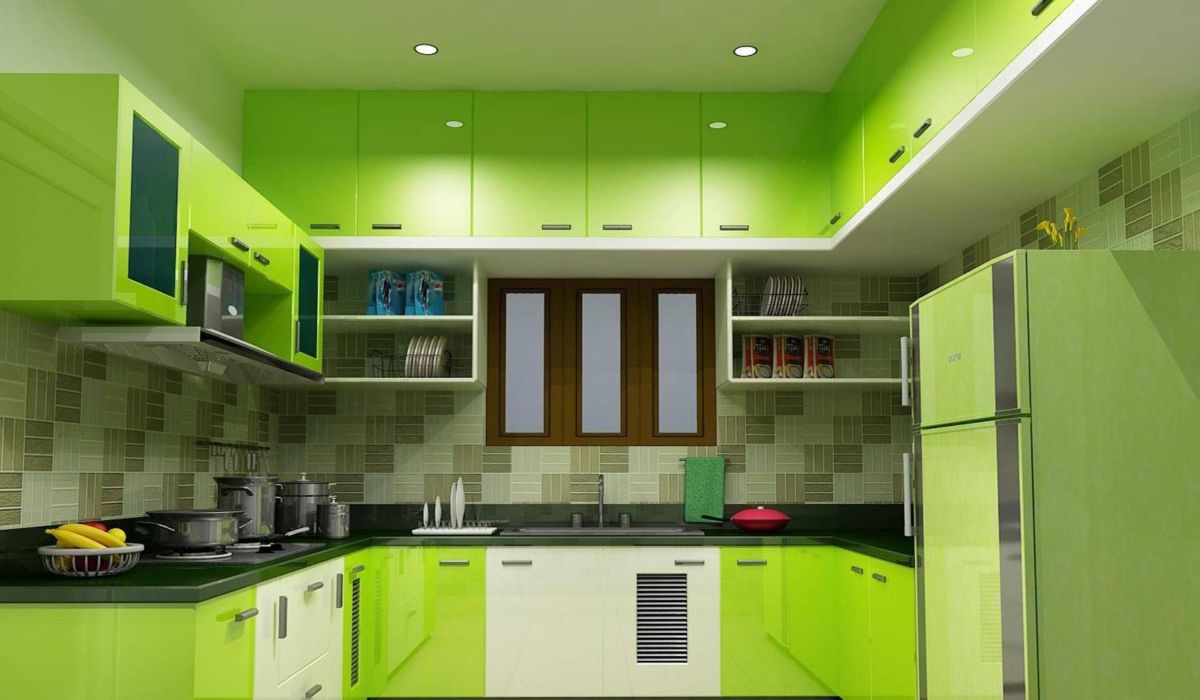
Use Non-Toxic Paint and Finishes
Traditional paints and finishes often contain volatile organic compounds (VOCs) that release toxins into the air, potentially affecting indoor air quality and health. Fortunately, many eco-friendly options are available today.
- Low-VOC and No-VOC Paints: Using low-VOC or no-VOC paints can help minimise air pollution and ensure a healthier kitchen environment. These paints come in various colours, allowing you to personalise your kitchen without compromising sustainability.
- Natural Wood Finishes: To seal wooden surfaces, opt for natural oil finishes, such as linseed oil or beeswax. These finishes are free of harmful chemicals, enhance the wood’s natural beauty, and are easy to reapply.
Maximise Natural Light and Ventilation
A well-lit and ventilated kitchen saves energy and creates a fresher, more inviting space. Natural light can help reduce the need for artificial lighting during the day, and good ventilation helps remove cooking odours and pollutants.
- Install large windows and Skylights: Large windows allow ample sunlight to fill your kitchen, reducing the need for artificial lighting. Skylights are another excellent option for bringing natural light into darker areas of the kitchen.
- Energy-Efficient LED Lighting: Opt for LED lights for night-time or cloudy days. LEDs use a fraction of the energy required by traditional incandescent bulbs and last longer, making them ideal for eco-friendly kitchens.
- Range Hoods and Ceiling Fans: To maintain good air quality, install an energy-efficient range hood that vents cooking fumes outside. Ceiling fans can also help circulate air, keeping your kitchen cool and comfortable without air conditioning.
Must Read: 11 Narrow Galley Kitchen Ideas for Small Spaces
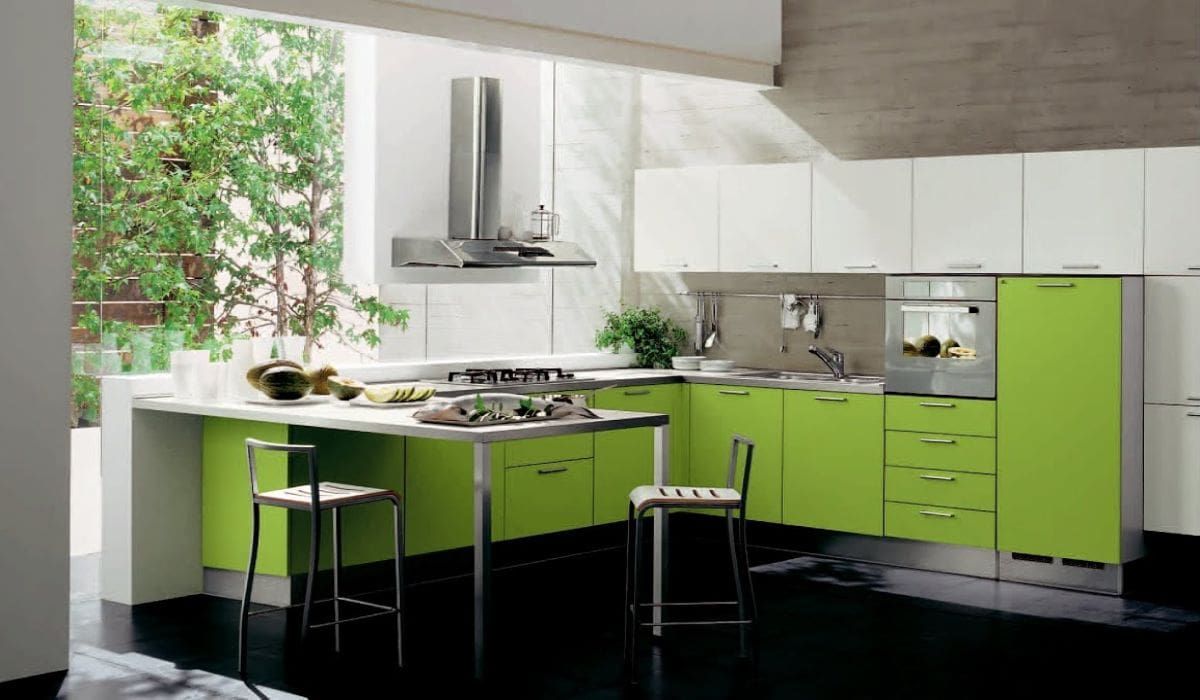
Consider Green Cabinetry and Furniture
Green cabinetry and furniture can transform your kitchen while staying true to sustainable design principles. Look for options that use reclaimed, recycled, or sustainably sourced materials.
- Certified Sustainable Wood Cabinets: Look for cabinets certified by the Forest Stewardship Council (FSC) or other reputable organisations. These certifications ensure that the wood is harvested sustainably and responsibly.
- Recycled Metal and Glass Cabinets: Consider cabinets made from recycled metal or glass for a more modern look. These materials are durable, stylish, and available in various finishes, adding a unique touch to your kitchen.
- Eco-Friendly Furniture Choices: Choose kitchen furniture from sustainably sourced materials or reclaimed wood. Vintage and second-hand pieces can add character and are more environmentally friendly than buying new ones.
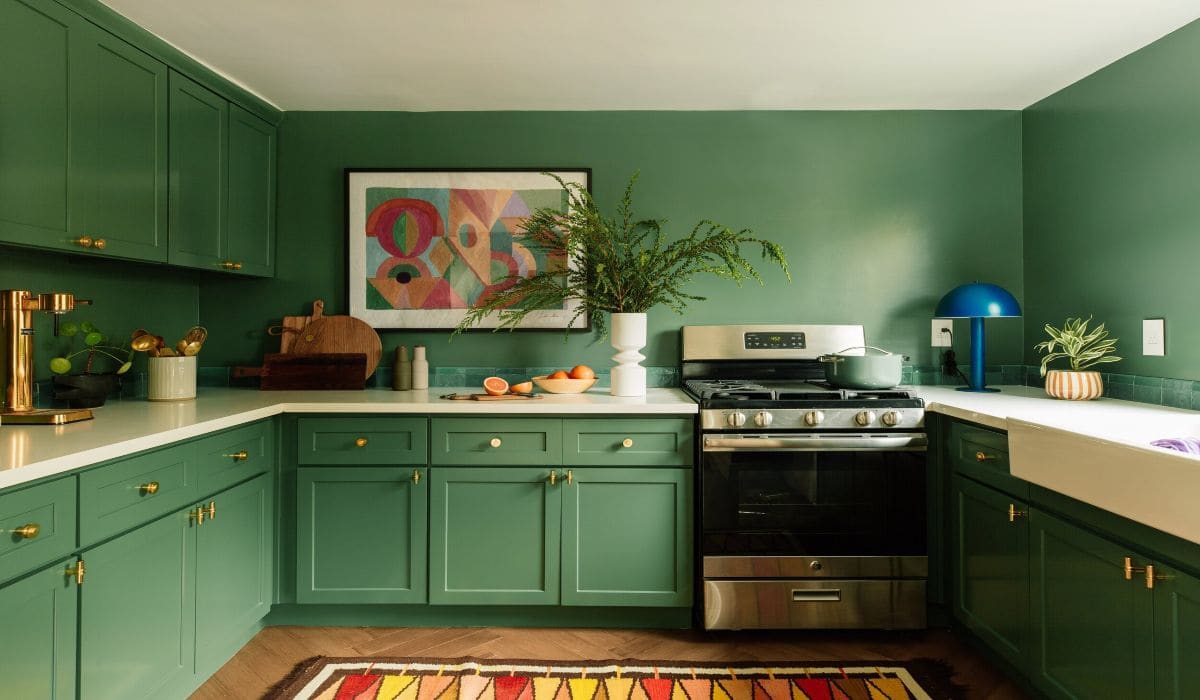
Add Greenery and Indoor Plants
Incorporating plants into your kitchen design adds a refreshing, natural element that enhances air quality and promotes well-being. Some plants are particularly beneficial for purifying indoor air, making them an excellent choice for a green kitchen.
- Herb Gardens and Vertical Plant Walls: Growing herbs like basil, thyme, and rosemary in your kitchen adds greenery and provides fresh ingredients at your fingertips. Vertical plant walls are another great option for compact kitchens, bringing life to your walls and making the space feel vibrant and natural.
- Air-Purifying Plants: Choose aloe Vera, spider plants, and peace lilies, known for their air-purifying properties. These plants help remove toxins and improve indoor air quality, creating a healthier kitchen environment.
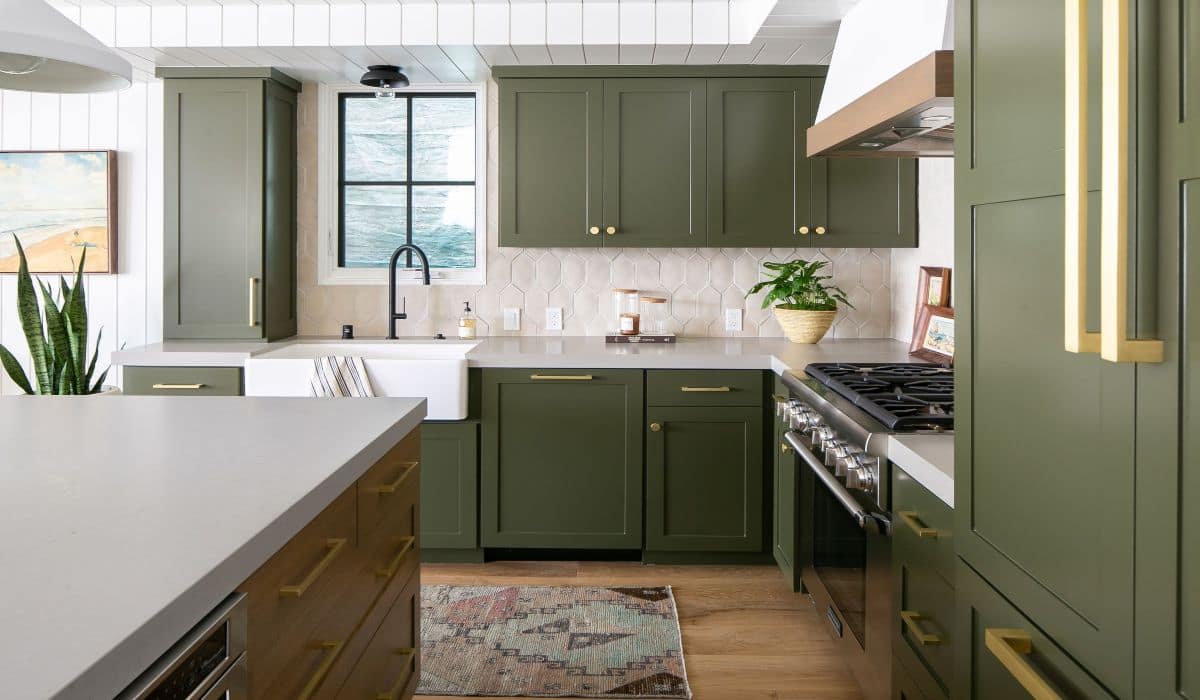
Use Recyclable and Compostable Materials
A sustainable kitchen isn’t complete without a well-thought-out waste management system. Emphasise recycling and composting to minimise waste and reduce your kitchen’s environmental footprint.
- Install a Recycling Station: Make recycling easy by setting up a designated recycling station in your kitchen. Separate bins for glass, plastic, and paper waste encourage family members to dispose of items responsibly.
- Consider Composting: Composting is an eco-friendly way to dispose of food waste. If you don’t have a garden, use a countertop compost bin or an electric composter that reduces waste to compostable soil.
- Opt for Reusable and Biodegradable Products: To further reduce waste, choose biodegradable cleaning supplies and reusable kitchen essentials, such as cloth napkins, beeswax wraps, and glass storage containers.
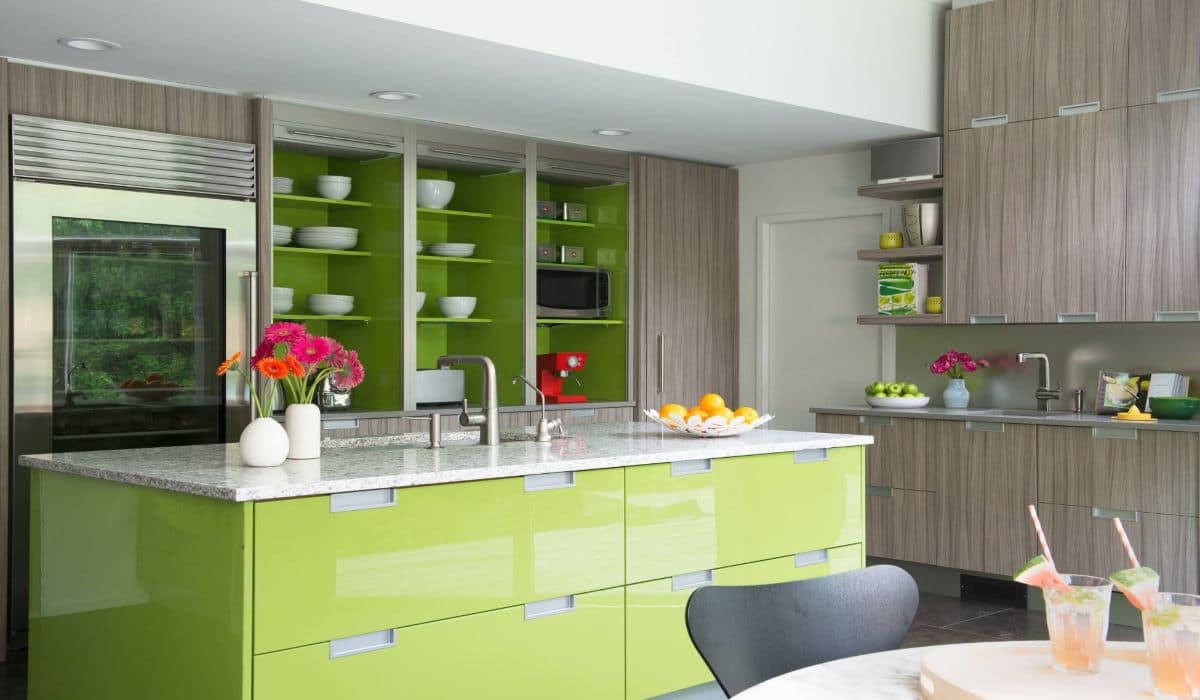
Sustainable Kitchen Accessories and Décor
The final touches in your green kitchen come from the accessories and décor that make the space feel complete. From sustainable cookware to eco-friendly décor, there are endless ways to make your kitchen more environmentally conscious.
- Eco-Friendly Cookware and Utensils: Choose cookware made from sustainable materials like stainless steel, cast iron, and bamboo. Avoid non-stick pans with harmful chemicals, opting for natural alternatives that are healthier and more durable.
- Natural Fibre Textiles: Use kitchen textiles made from organic cotton, linen, or bamboo. These materials are biodegradable and renewable and look great, bringing a rustic touch to your kitchen.
- Sustainable Décor: Decorate your kitchen with sustainable art, reclaimed wood shelves, and vintage items. These eco-friendly choices reduce waste and add a unique, personal touch to your kitchen design.
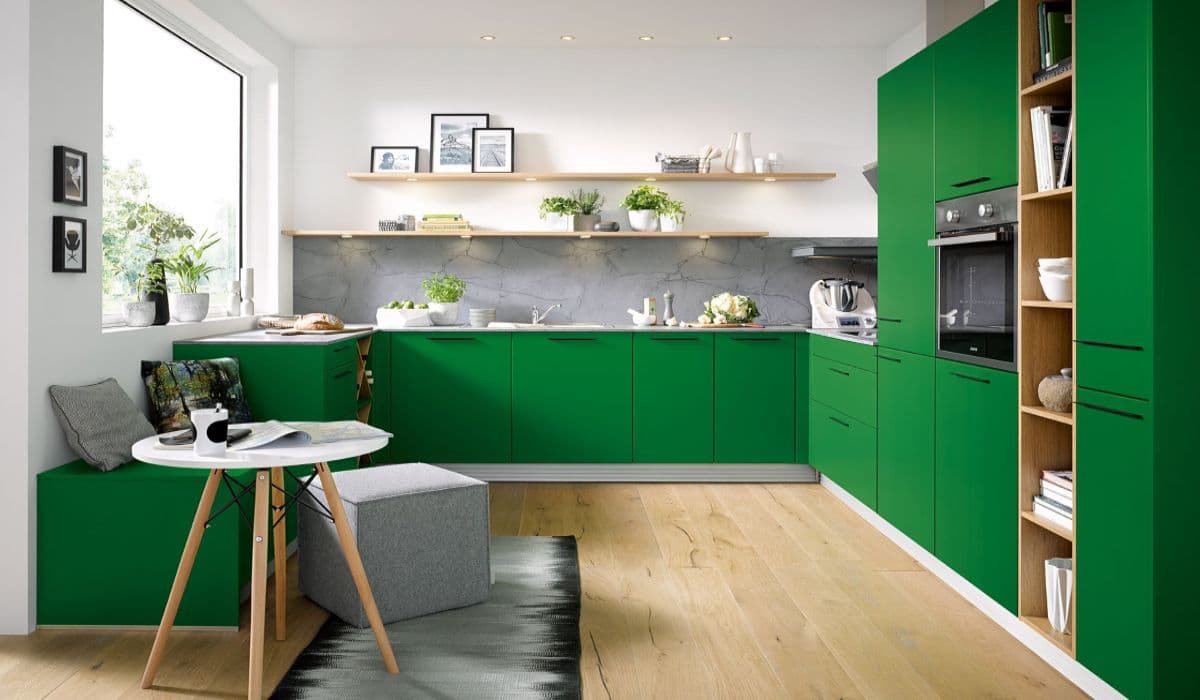
Consider Smart Kitchen Technologies
Smart technology can be a valuable addition to a green kitchen, making saving energy, reducing waste, and streamlining cooking processes easier.
- Smart Thermostats and Lighting: Smart thermostats and lighting systems can be programmed to reduce energy usage. For example, you can set the lights to turn off automatically when the kitchen is not in use.
- Smart Waste Systems: Some smart waste systems can automatically sort recyclables and alert you when the bin is full, making waste management more efficient and eco-friendly.
- Water Filtration Systems: Instead of buying bottled water, install a high-quality water filtration system in your kitchen. This saves plastic and provides a constant supply of clean, filtered water for cooking and drinking.
Conclusion
Creating a green kitchen is not just about embracing sustainability; it’s about crafting a space that resonates with a lifestyle of mindful choices. From eco-friendly materials and energy-efficient appliances to sustainable décor and smart technologies, there are countless ways to make your kitchen greener and more efficient. By adopting these green kitchen design ideas, you’ll enjoy a beautiful, functional cooking space and contribute positively to the environment, making a lasting impact on the planet for future generations.
If you’re ready to embrace a sustainable lifestyle, start with your kitchen—the heart of your home—and transform it into a space that’s as kind to the earth as it is to your family.
Must Read: 16 Inspiring Kitchen Remodel Ideas to Transform Your Space
People Also Ask
How can I make my kitchen more energy-efficient?
Start by choosing Energy Star-certified appliances, which use less energy and water than traditional options. Consider switching to LED lighting, installing a smart thermostat, and using induction cooktops, which are more efficient than gas stoves. Proper insulation and good ventilation can also help reduce energy consumption.
Are eco-friendly materials more expensive?
While some eco-friendly materials, like bamboo or recycled glass, may cost more upfront, they often last longer and require less maintenance, offering better value over time. Energy savings from efficient appliances can also offset the initial investment, making green choices more cost-effective in the long run.
Can I still have a stylish kitchen while going green?
Absolutely! Green kitchen designs are both stylish and sustainable. Many eco-friendly materials, such as recycled glass countertops, reclaimed wood cabinetry, and metal finishes, come in various styles and colours. Sustainable design is also timeless, as natural materials and neutral tones create a classic, elegant look.
How can I reduce waste in my kitchen?
Set up a recycling station to easily sort waste, and consider adding a compost bin for food scraps. Replace single-use items with reusable alternatives like glass storage containers, cloth towels, and beeswax wraps. Opt for biodegradable cleaning products, and avoid excess packaging by buying pantry items in bulk.

